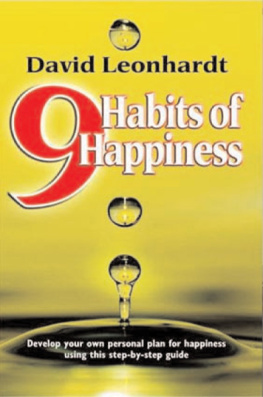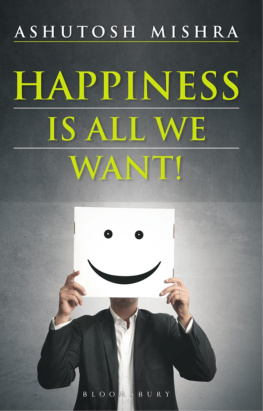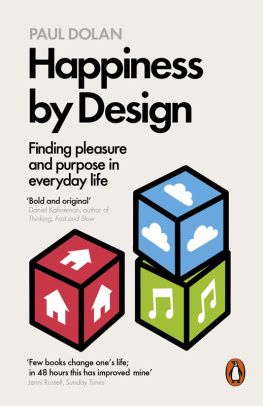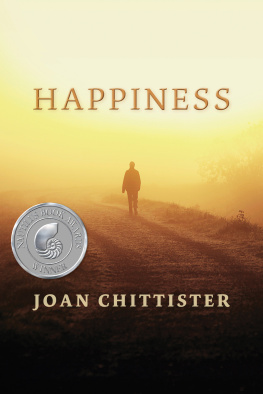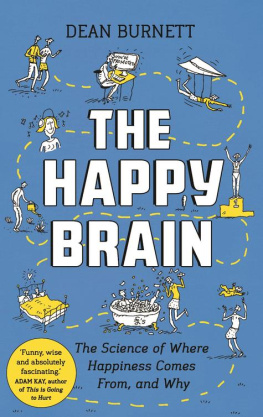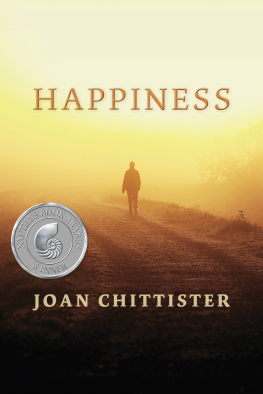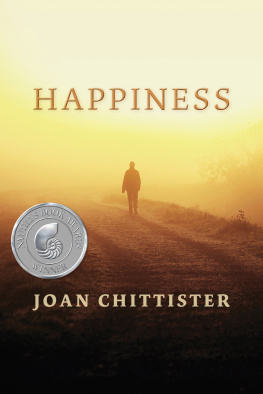Paul Anand - Happiness Explained: What happiness is and what can be done to promote it
Here you can read online Paul Anand - Happiness Explained: What happiness is and what can be done to promote it full text of the book (entire story) in english for free. Download pdf and epub, get meaning, cover and reviews about this ebook. year: 2016, publisher: Oxford University Press, genre: Politics. Description of the work, (preface) as well as reviews are available. Best literature library LitArk.com created for fans of good reading and offers a wide selection of genres:
Romance novel
Science fiction
Adventure
Detective
Science
History
Home and family
Prose
Art
Politics
Computer
Non-fiction
Religion
Business
Children
Humor
Choose a favorite category and find really read worthwhile books. Enjoy immersion in the world of imagination, feel the emotions of the characters or learn something new for yourself, make an fascinating discovery.

- Book:Happiness Explained: What happiness is and what can be done to promote it
- Author:
- Publisher:Oxford University Press
- Genre:
- Year:2016
- Rating:4 / 5
- Favourites:Add to favourites
- Your mark:
- 80
- 1
- 2
- 3
- 4
- 5
Happiness Explained: What happiness is and what can be done to promote it: summary, description and annotation
We offer to read an annotation, description, summary or preface (depends on what the author of the book "Happiness Explained: What happiness is and what can be done to promote it" wrote himself). If you haven't found the necessary information about the book — write in the comments, we will try to find it.
Paul Anand: author's other books
Who wrote Happiness Explained: What happiness is and what can be done to promote it? Find out the surname, the name of the author of the book and a list of all author's works by series.
Happiness Explained: What happiness is and what can be done to promote it — read online for free the complete book (whole text) full work
Below is the text of the book, divided by pages. System saving the place of the last page read, allows you to conveniently read the book "Happiness Explained: What happiness is and what can be done to promote it" online for free, without having to search again every time where you left off. Put a bookmark, and you can go to the page where you finished reading at any time.
Font size:
Interval:
Bookmark:
What human flourishing is and
what we can do to promote it


Great Clarendon Street, Oxford, OX2 6DP, United Kingdom
Oxford University Press is a department of the University of Oxford. It furthers the Universitys objective of excellence in research, scholarship, and education by publishing worldwide. Oxford is a registered trade mark of Oxford University Press in the UK and in certain other countries
Paul Anand 2016
The moral rights of the author have been asserted
First Edition published in 2016
Impression: 1
All rights reserved. No part of this publication may be reproduced, stored in a retrieval system, or transmitted, in any form or by any means, without the prior permission in writing of Oxford University Press, or as expressly permitted by law, by licence or under terms agreed with the appropriate reprographics rights organization. Enquiries concerning reproduction outside the scope of the above should be sent to the Rights Department, Oxford University Press, at the address above
You must not circulate this work in any other form and you must impose this same condition on any acquirer
Published in the United States of America by Oxford University Press 198 Madison Avenue, New York, NY 10016, United States of America
British Library Cataloguing in Publication Data
Data available
Library of Congress Control Number: 2015949395
ISBN 9780198735458
ebook ISBN 9780191054518
Printed in Great Britain by Clays Ltd, St Ives plc
Links to third party websites are provided by Oxford in good faith and for information only. Oxford disclaims any responsibility for the materials contained in any third party website referenced in this work.
For my family and the many friends and colleagues who have helped along the way, particularly Anne, John, Hon, and Tamsen.
In Happiness Explained I seek to show that, instead of focusing on money as our metric of progress, it is possible to go beyond GDP by developing and analysing measures of human wellbeing. This is not to suggest we should forsake the material world or become Trappist monks but rather just to acknowledge the fact that there is, globally, growing interest in non-financial measures of life quality. For many who are comfortably off in financial terms, it seems a logical next step to ask whether material affluence is delivering the quality of life we seek, but success in the material realm is also having an effect on societys hopes for those less fortunate. And there is a range of questions that follow. Am I able to get the balance between family and work that I want? What do I need in terms of personal growth and development? Will I be able to find decent employment when I need to? What career path is best suited for my skills? How can I look after my family and care for those with whom I am connected by various bonds of duty and commitment? Given the diversity of issues involved, it should not be surprising to find that no particular science seems to have a monopoly of wisdom when it comes to happiness and wellbeing. For these reasons, therefore, I offer, here, a short guide to a vast territory of research from economics through psychology to philosophy that can help us think about happiness and wellbeing both at an individual level and in a societal context.
It is natural to ask, early on, what we mean by terms such as happiness or wellbeing and as it happens, both can be traced back to the ancient Greek stem eu meaning well. This root appears in words still used, such as eulogy (good words) and interest in it goes back to the ethical theory of eudaimonia (good spirit) developed by Aristotle who argued for the importance of both internal personality characteristics as well as visible, external factors such as income or health. In Old French, eu became heur from which derives happy in English, a word that qualifies its subject (happy family, happy coincidence and so on) in much the same way as did its ancient Greek counterpart.
Happiness sometimes takes on a narrow meaning related to a persons state of mind and there is evidence of such use in English in the early sixteenth century though this narrow usage has never excluded the broader sense generally associated with wellbeing. The term human flourishing is perhaps a reasonable modern counterpart to Aristotles eudaimonia and I shall therefore occasionally use wellbeing and happiness to refer to external and internal issues recognizing that these are usually connected and often closely so.
In my own teams work, we have been interested in measuring human flourishing and using the resulting data to understand how wellbeing is produced and distributed. The field attracts its fair share of work on the technicalities of index design and our own research has included some such activity but here I want to focus on some more basic but equally important issues, namely what are the dimensions in which human wellbeing resides, what are the drivers or causes of wellbeing, and how do all of these change over the human life course? There have been those who thought that science should focus on things that are hard and measurable and that happiness was neither, but the perspective no longer feels like the majority view it might once have been. At a population level, there are clearly some common patterns that tell us about the kinds of things that help life go well (or otherwise).
A number of sciences are contributing to our understanding of human wellbeing, though particularly evident are contributions from experimental and social psychology, empirical economic modelling, and ethics. Both psychology and economics have had long-standing interests in human wellbeing though it is arguably only in the past twenty years that this has been reflected in major research programmes such as those drawn on in . In part, science has been responding to global changes in the social world. Education, technological change, and increasing global trade have helped countries increase their national incomes in financial terms and this in turn has led to improved quality of life and aspirations for millions. And alongside this progress there have emerged a raft of new challenges of which rising inequality is one. Increasingly, it becomes easier to identify such difficultiespeople can compare their own lot with that of others around the world using their computers, televisions, and phones in an instant.
Research and policy have become closely related in recent years. Novel methods, theories and technologies of measuring human happiness and wellbeing have been met with interest from political and business leaders keen to develop and exploit the practical implications and policy opportunities. Similarly in the social realm, a much wider range of social relations are supported in many countries than was the case fifty years ago. So it is against the background of this confluence of evidence, theory, and ideas on the one hand, and changing social and economic needs and wants on the other, that this book is set. Although not intended to be an academic book, it draws extensively on research. In particular, I spend some time explaining a new approach developed by a Nobel Laureate in Economics that I, and my colleagues, have sought to operationalize over the past decade and a half. When we started this work, there was a question as to whether the approach
Font size:
Interval:
Bookmark:
Similar books «Happiness Explained: What happiness is and what can be done to promote it»
Look at similar books to Happiness Explained: What happiness is and what can be done to promote it. We have selected literature similar in name and meaning in the hope of providing readers with more options to find new, interesting, not yet read works.
Discussion, reviews of the book Happiness Explained: What happiness is and what can be done to promote it and just readers' own opinions. Leave your comments, write what you think about the work, its meaning or the main characters. Specify what exactly you liked and what you didn't like, and why you think so.

